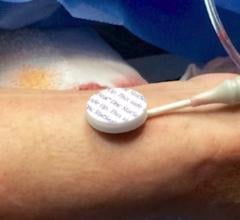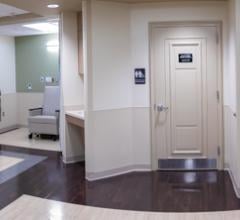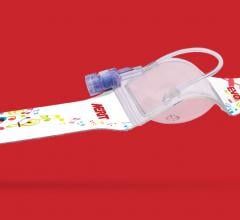May 6, 2011 – As interventional cardiologists increasingly perform angiography or angioplasty and stent procedures via radial access versus femoral (groin or upper leg) access, it will be imperative to develop training and competency guidelines. This was according to the first report from the Society for Cardiovascular Angiography and Intervention's (SCAI) Transradial Working Group released yesterday at the SCAI 2011 Scientific Sessions, and published in Catheterization and Cardiovascular Interventions. The report reviews issues such as patient selection and preparation, artery access, catheter and therapy selection, primary PCI, potential complications and training for intervention cardiologists performing procedures via radial access.
Radial access is common around the world, but still remains relatively unused in the United States. Recent research, including the RIVAL Trial presented at the 2011 American College of Cardiology (ACC) 60th Annual Scientific Sessions, has shown radial access is a safe and effective technique, can increase survival for heart attack patients and is often preferred by patients over femoral access. However, published guidelines for the procedure and training are not yet available.
"Data increasingly show that the radial technique, which many patients find more comfortable, is also safe and effective," said Ronald P. Caputo, M.D., FSCAI, the report's lead author and director of cardiac services, St. Joseph's Hospital in Syracuse, N.Y. "As this technique is used more frequently in the United States, we want to ensure it is used safely and appropriately."
The report recommends training focused on three levels of competency based on the individual interventional cardiologist's level of experience with simple and complex cases, including patients with challenging anatomy. The authors emphasize that interventional cardiology trainees should develop equal competency in both femoral and radial approaches, and guidelines should be developed to address best practices for safe use of the radial technique.
"To ensure patients receive the best possible care, we recommend developing training programs that provide interventional cardiologists with opportunities to learn and test their skills in the radial technique," said Jennifer A. Tremmel, M.D., M.S., FSCAI, report co-author and director of the transradial program at Stanford University Medical Center in Stanford, Calif.
As of 2009, only 4.5 percent of coronary procedures in the United States are performed transradially. The technique is more common in Europe and Asia/Australia, where 30 and 40 percent of procedures are performed via radial access, respectively.
SCAI's Transradial Working Group has developed a series of regional educational programs for interventional cardiologists to be trained in the use of radial access. The demand for these programs has been high, and SCAI plans to offer at least four programs nationwide in 2011.
The complete report, "Transradial Arterial Access for Coronary and Peripheral Procedures," may be accessed at http://onlinelibrary.wiley.com/doi/10.1002/ccd.23052/pdf.
For more information: www.scai.org


 May 19, 2022
May 19, 2022 








